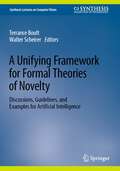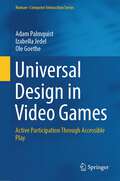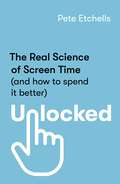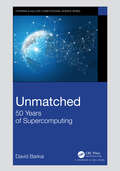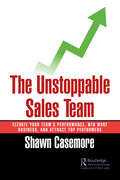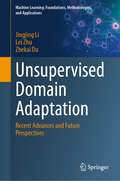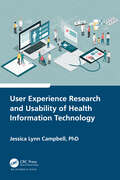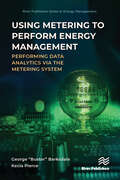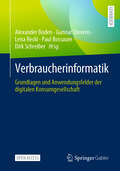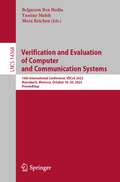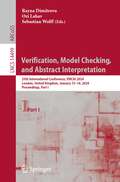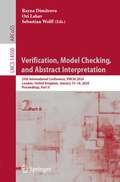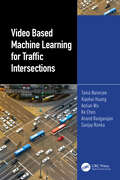- Table View
- List View
Understanding the Digital Transformation of Socio-Economic-Technological Systems: Dedicated to the 120th Anniversary of Economic Education at Peter the Great St. Petersburg Polytechnic University (Lecture Notes in Networks and Systems #951)
by Tatiana Kudryavtseva Mohammed Ali Berawi Tessaleno Campos Devezas Sergey Evgenievich BarykinThis book is dedicated to the 120th anniversary of economic education at Peter the Great St. Petersburg Polytechnic University (SPbPU). It gathers the best and most recent research materials of scientists from SPbPU’s Institute of Industrial Management, Economics and Trade and their colleagues from other universities.This book reflects many years of experience, unique results and interesting discoveries made by collaborative teams exploring the following issues: engineering economics, sustainable development and other topics related to the digitalization of enterprises, industries and systems; digital transformation of the service market in the face of global challenges; automation of enterprise control systems, digital and data management solutions for business; socio-economic development and territorial management in the era of Industry 4.0, etc. This book offers various views on challenges faced by today's economy and industry that are undoubtedly relevant to readers of almost all categories: from students to practitioners and scientists, but mostly for researchers.
A Unifying Framework for Formal Theories of Novelty: Discussions, Guidelines, and Examples for Artificial Intelligence (Synthesis Lectures on Computer Vision)
by Terrance Boult Walter ScheirerThis book presents the first unified formalization for defining novelty across the span of machine learning, symbolic-reasoning, and control and planning-based systems. Dealing with novelty, things not previously seen by a system, is a critical issue for building vision-systems and general intelligent systems. The book presents examples of using this framework to define and evaluate in multiple domains including image recognition image-based open world learning, hand-writing and author analysis, CartPole Control, Image Captioning, and Monopoly. Chapters are written by well-known contributors to this new and emerging field. In addition, examples are provided from multiple areas, such as machine-learning based control problems, symbolic reasoning, and multi-player games.
Universal Design in Video Games: Active Participation Through Accessible Play (Human–Computer Interaction Series)
by Adam Palmquist Izabella Jedel Ole GoetheAs participation in game related activities increases around the world and across a larger part of the population, it is obvious that games are not just an entertainment medium for children or young people. Games can be used to accomplish different purposes for different groups of people in society. Developing a universal designed game involves more than adding a cast of diverse characters. Games with universal design, at their core, are experiences that are designed from the ground up to be accessible to everyone – through mechanics, options, and user experience. This book explains the meaning and need for universal design in video games and sheds light on important disciplines. Researchers define a universal designed game as a video game that actively welcomes all players. When players connect authentically with a video game, they’re much more likely to engage with the content. Conversely, when players can’t physically play a game, or don’t see characters that look like them, they feel isolated and miss out on beneficial opportunities to learn and collaborate. Universal design maximizes the impact of playing games, for instance, by ensuring that they’re accessible, empowering and representative for every participant.
Unleashing the Power of Data with Trusted AI: A guide for board members and executives
by Wendy Turner-WilliamsDiscover the transformative potential of AI for data-driven decision-making and fast-track your organization's growth journey with trusted AI implementation Key FeaturesGain comprehensive insights and analyses to make quick and accurate decisionsLearn to integrate trusted AI into your organizational workflows and decision-making processesExplore real-world case studies that showcase the transformative impact of AI in diverse industriesPurchase of the print or Kindle book includes a free PDF eBookBook DescriptionWritten by a distinguished leader and innovator who has been instrumental in spearheading digital, cloud, and AI transformations across global brands, Unleashing the Power of Data with Trusted AI is an indispensable resource that will make you AI-ready. This comprehensive guide is designed to meet the urgent need for clarity and to give you actionable insights into today's rapidly evolving landscape of AI and its fundamental driver - data. You’ll delve into the exciting world of AI and its integration with data, uncover its significance, ethical considerations, and strategic applications with real-life success stories from industry giants like Starbucks, Netflix, and Siemens. You’ll also witness first-hand how the integration of data and AI has reshaped markets and elevated customer experiences, and discover the future of generative AI based on several surveys and case studies. You’ll gain an understanding of how AI has evolved across industries, empowering decision-making and fostering innovation. Tailored for board members, executives, innovators, and tech enthusiasts, this immersive guide will reshape your understanding of data and AI synergy. By the end of this guide, you’ll be able to lead your teams, customers, partners, and organizations confidently and responsibly in the era of AI. What you will learnNavigate ethical considerations and comply with data regulations effectivelyElevate data quality and enhance data literacy within your organizationCraft effective AI strategies for data analytics processesExplore real-world case studies showcasing the tangible benefits of trusted AIOptimize decision-making processes by harnessing AI-driven insightsWho this book is forThis report is for executives and board members of mid to large enterprises, such as CDAIOs, CTOs, CIOs, CISOs, CPOs, and CEOs, as well as AI, data, ethics, privacy, and security professionals. With this book, you’ll confidently develop your data and AI implementation strategy and navigate the complex landscape of emerging technologies with clarity.
Unlocked: The Real Science of Screen Time (and how to spend it better)
by Pete Etchells'A welcome counterpoint to the technopanic that screen time is causing a mental health crisis' Bruce Hood 'A rare mix of trustworthy science, practical advice, and human stories ... I'm going to recommend it to all the parents I know, and keep it handy for reference next time I see a scary headline about how technology is ruining our lives' Timandra HarknessMost of us spend a significant part of the day in front of a screen. Our work and social lives play out through our computers, tablets and phones: on email, social media, video conference calls and gaming servers. But what is all this screen time doing to our health, our sleep, and our relationships?Professor Pete Etchells studies the way we use screens, and how they can affect us. In UNLOCKED, he delves into the real science behind the panic about our alleged device addiction and withering attention spans. Armed with the latest research, he reveals how little we have to fear, and the great deal we have to gain, by establishing a more positive relationship with our screens. That begins with asking ourselves some essential questions about how we use them.Instead of clamouring for us to ditch our devices (before guiltily returning to the same old habits), UNLOCKED is a sustainable, realistic and vital guide to transforming our connection with technology.
Unmatched: 50 Years of Supercomputing (Chapman & Hall/CRC Computational Science)
by David BarkaiUnmatched: 50 Years of Supercomputing: A Personal Journey Accompanying the Evolution of a Powerful ToolThe rapid and extraordinary progress of supercomputing over the past half-century is a powerful demonstration of our relentless drive to understand and shape the world around us. In this book, David Barkai offers a unique and compelling account of this remarkable technological journey, drawing from his own rich experiences working at the forefront of high-performance computing (HPC).This book is a journey delineated as five decade-long ‘epochs’ defined by the systems’ architectural themes: vector processors, multi-processors, microprocessors, clusters, and accelerators and cloud computing. The final part examines key issues of HPC and discusses where it might be headed.A central goal of this book is to show how computing power has been applied, and, more importantly, how it has impacted and benefitted society. To this end, the use of HPC is illustrated in a range of industries and applications, from weather and climate modeling to engineering and life sciences. As such, this book appeals to both students and general readers with an interest in HPC, as well as industry professionals looking to revolutionize their practice.From the Foreword:“David Barkai's career has spanned five decades, during which he has had the rare opportunity to be part of some of the most significant developments in the field of supercomputing. His personal and professional insights, combined with his deep knowledge and passion for the subject matter, make this book an invaluable resource for anyone interested in the evolution of HPC and its impact on our lives.”-Horst Simon, Director, Abu Dhabi Investment Authority (ADIA) Lab
Unmatched: 50 Years of Supercomputing (Chapman & Hall/CRC Computational Science)
by David BarkaiUnmatched: 50 Years of Supercomputing: A Personal Journey Accompanying the Evolution of a Powerful ToolThe rapid and extraordinary progress of supercomputing over the past half-century is a powerful demonstration of our relentless drive to understand and shape the world around us. In this book, David Barkai offers a unique and compelling account of this remarkable technological journey, drawing from his own rich experiences working at the forefront of high-performance computing (HPC).This book is a journey delineated as five decade-long ‘epochs’ defined by the systems’ architectural themes: vector processors, multi-processors, microprocessors, clusters, and accelerators and cloud computing. The final part examines key issues of HPC and discusses where it might be headed.A central goal of this book is to show how computing power has been applied, and, more importantly, how it has impacted and benefitted society. To this end, the use of HPC is illustrated in a range of industries and applications, from weather and climate modeling to engineering and life sciences. As such, this book appeals to both students and general readers with an interest in HPC, as well as industry professionals looking to revolutionize their practice.From the Foreword:“David Barkai's career has spanned five decades, during which he has had the rare opportunity to be part of some of the most significant developments in the field of supercomputing. His personal and professional insights, combined with his deep knowledge and passion for the subject matter, make this book an invaluable resource for anyone interested in the evolution of HPC and its impact on our lives.”-Horst Simon, Director, Abu Dhabi Investment Authority (ADIA) Lab
The Unstoppable Sales Team: Elevate Your Team’s Performance, Win More Business, and Attract Top Performers
by Shawn CasemoreWhy are companies like Salesforce, Whirlpool, and Cintas repeatedly recognized for their top sales performance? What are they doing that sets them apart from their competition, allowing them to increase sales revenue year over year? It’s not a result of their ability to master online sales funnels or introduce software that automates their sales process. Instead, these companies dominate in their markets because they continually elevate their sales team’s performance to the level of being unstoppable. This book is written for sales executives, sales leaders, and sales managers. If you lead a sales team and want to accelerate their performance without being forced to invest in new technology, hire more employees or completely restructure your existing sales team, then this book is for you. The Unstoppable Sales Team contains the lessons learned, best practices and observations applied through the author’s work with sales teams globally. Building on his popular book The Unstoppable Sales Machine, the author shares the best strategies for building a high-performing sales team that outsells and outperforms their competition.
The Unstoppable Sales Team: Elevate Your Team’s Performance, Win More Business, and Attract Top Performers
by Shawn CasemoreWhy are companies like Salesforce, Whirlpool, and Cintas repeatedly recognized for their top sales performance? What are they doing that sets them apart from their competition, allowing them to increase sales revenue year over year? It’s not a result of their ability to master online sales funnels or introduce software that automates their sales process. Instead, these companies dominate in their markets because they continually elevate their sales team’s performance to the level of being unstoppable. This book is written for sales executives, sales leaders, and sales managers. If you lead a sales team and want to accelerate their performance without being forced to invest in new technology, hire more employees or completely restructure your existing sales team, then this book is for you. The Unstoppable Sales Team contains the lessons learned, best practices and observations applied through the author’s work with sales teams globally. Building on his popular book The Unstoppable Sales Machine, the author shares the best strategies for building a high-performing sales team that outsells and outperforms their competition.
Unsupervised Domain Adaptation: Recent Advances and Future Perspectives (Machine Learning: Foundations, Methodologies, and Applications)
by Jingjing Li Lei Zhu Zhekai DuUnsupervised domain adaptation (UDA) is a challenging problem in machine learning where the model is trained on a source domain with labeled data and tested on a target domain with unlabeled data. In recent years, UDA has received significant attention from the research community due to its applicability in various real-world scenarios. This book provides a comprehensive review of state-of-the-art UDA methods and explores new variants of UDA that have the potential to advance the field. The book begins with a clear introduction to the UDA problem and is mainly organized into four technical sections, each focused on a specific piece of UDA research. The first section covers criterion optimization-based UDA, which aims to learn domain-invariant representations by minimizing the discrepancy between source and target domains. The second section discusses bi-classifier adversarial learning-based UDA, which creatively leverages adversarial learning by conducting a minimax game between the feature extractor and two task classifiers. The third section introduces source-free UDA, a novel UDA setting that does not require any raw data from the source domain. The fourth section presents active learning for UDA, which combines domain adaptation and active learning to reduce the amount of labeled data needed for adaptation. This book is suitable for researchers, graduate students, and practitioners who are interested in UDA and its applications in various fields, primarily in computer vision. The chapters are authored by leading experts in the field and provide a comprehensive and in-depth analysis of the current UDA methods and new directions for future research. With its broad coverage and cutting-edge research, this book is a valuable resource for anyone looking to advance their knowledge of UDA.
Urban Infrastructure in Zimbabwe: Departures, Divergences and Convergences (The Urban Book Series)
by Innocent Chirisa Abraham R. MatamandaThe book provides insights into urban infrastructure debates and discourses in Zimbabwe. Through an inter-disciplinary and multi-disciplinary approach, the book explores the theoretical, conceptual and lived experiences in urban infrastructure. The book focuses on case studies relating to urban transport, public housing, water and sanitation and Geographical Information Systems (GIS) among other substantive issues relating to urban infrastructure and services.
User Experience Research and Usability of Health Information Technology
by Jessica Lynn CampbellHealth information technology (HIT) is a critical component of the modern healthcare system. Yet to be effective and safely implemented in healthcare organizations and physicians and patients’ lives, it must be usable and useful. User Experience (UX) research is required throughout the full system design lifecycle of HIT products, which involve a user-centered and human- centered approach. This book discusses UX research frameworks, study designs, methods, data-analysis techniques, and a variety of data collection instruments and tools that can be used to conduct UX research in the healthcare space, all of which involve HIT and digital health. This book is for academics and scholars to be used to design studies for graduate dissertation work, in independent research, or as a textbook for UX/usability courses in health informatics or related health information and communication courses. This book is also useful for UX practitioners because it provides guidance on how to design a user research or usability study and focuses on leveraging a mixed- methods approach, including step-by-step by instructions and best practices for conducting: Field studies Interviews Focus groups Diary studies Surveys Heuristic evaluation Cognitive walkthrough Think aloud A plethora of standardized surveys and retrospective questionnaires (SUS, Post-study System Usability Questionnaire (PSSUQ)) are also included. UX researchers and healthcare professionals will gain an understanding of how to design a rigorous, yet feasible study that generates useful insights to inform the design of usable HIT. Everything from consent forms to how many participants to include in a usability study has been covered in this book. The author encourages user-centered design (UCD), mixed-methods, and collaboration amongst interdisciplinary teams. Knowledge from many inter-related disciplines, like psychology, technical communication (TC), and human-computer interaction (HCI), together with experiential knowledge from experts is offered throughout the text.
User Experience Research and Usability of Health Information Technology
by Jessica Lynn CampbellHealth information technology (HIT) is a critical component of the modern healthcare system. Yet to be effective and safely implemented in healthcare organizations and physicians and patients’ lives, it must be usable and useful. User Experience (UX) research is required throughout the full system design lifecycle of HIT products, which involve a user-centered and human- centered approach. This book discusses UX research frameworks, study designs, methods, data-analysis techniques, and a variety of data collection instruments and tools that can be used to conduct UX research in the healthcare space, all of which involve HIT and digital health. This book is for academics and scholars to be used to design studies for graduate dissertation work, in independent research, or as a textbook for UX/usability courses in health informatics or related health information and communication courses. This book is also useful for UX practitioners because it provides guidance on how to design a user research or usability study and focuses on leveraging a mixed- methods approach, including step-by-step by instructions and best practices for conducting: Field studies Interviews Focus groups Diary studies Surveys Heuristic evaluation Cognitive walkthrough Think aloud A plethora of standardized surveys and retrospective questionnaires (SUS, Post-study System Usability Questionnaire (PSSUQ)) are also included. UX researchers and healthcare professionals will gain an understanding of how to design a rigorous, yet feasible study that generates useful insights to inform the design of usable HIT. Everything from consent forms to how many participants to include in a usability study has been covered in this book. The author encourages user-centered design (UCD), mixed-methods, and collaboration amongst interdisciplinary teams. Knowledge from many inter-related disciplines, like psychology, technical communication (TC), and human-computer interaction (HCI), together with experiential knowledge from experts is offered throughout the text.
Using Metering to Perform Energy Management: Performing Data Analytics via the Metering System (River Publishers Series in Energy Management)
by George “Buster” Barksdale Kecia PierceThis book covers many helpful analysis tools and processes to assist energy managers (EMs) administer their energy program through their meter management system (MMS). These tools and the corresponding techniques offer opportunities for the EM to optimize their time. If fully utilized, the MMS will allow an EM to reduce field time significantly, as they can perform most of the energy management pre-analysis, benchmarking, data analysis and, in many cases, complete the task of performing a virtual audit remotely from their office.The book covers many instructional areas that are, for the most part, only offered by consulting groups and software vendors as services. Those two groups offer their services for fees and therefore do not publish their ideas or best practices for commercial use. Software vendors provide software analytics whose functional aspects are addressed by our descriptions of the essential tasks in each chapter. This book allows EMs to expand their knowledge of software capabilities by viewing other best practices. Consulting groups offer services in a few areas: basic benchmarking and monitoring-based commissioning (MBCx). These services are considered essential to energy management but are generally implemented as on-site services, which, due to their nature, are much more expensive than a monitoring commissioning (MCx) solution. Monitoring commissioning, in contrast to MBCx, is purely done at the monitoring level and allows you to manage the critical energy measures that comprise the majority of the savings, but without getting into the field testing.Benchmarking is covered much deeper in the book as we show how to benchmark each system within a building. The benchmarking sections show how to automatically analyze each system’s usage into a separate benchmark for baseload, lighting, AC, and fan/pump systems. These systems produce benchmarks so EMs can compare by site, category type, climate zone, etc. We also introduce benchmarks that enable the EM to utilize tools to determine the performance of each system and which are their most significant energy users. These analytics functions are covered to produce results that identify potential energy savings for each energy system.
Using Metering to Perform Energy Management: Performing Data Analytics via the Metering System (River Publishers Series in Energy Management)
by George “Buster” Barksdale Kecia PierceThis book covers many helpful analysis tools and processes to assist energy managers (EMs) administer their energy program through their meter management system (MMS). These tools and the corresponding techniques offer opportunities for the EM to optimize their time. If fully utilized, the MMS will allow an EM to reduce field time significantly, as they can perform most of the energy management pre-analysis, benchmarking, data analysis and, in many cases, complete the task of performing a virtual audit remotely from their office.The book covers many instructional areas that are, for the most part, only offered by consulting groups and software vendors as services. Those two groups offer their services for fees and therefore do not publish their ideas or best practices for commercial use. Software vendors provide software analytics whose functional aspects are addressed by our descriptions of the essential tasks in each chapter. This book allows EMs to expand their knowledge of software capabilities by viewing other best practices. Consulting groups offer services in a few areas: basic benchmarking and monitoring-based commissioning (MBCx). These services are considered essential to energy management but are generally implemented as on-site services, which, due to their nature, are much more expensive than a monitoring commissioning (MCx) solution. Monitoring commissioning, in contrast to MBCx, is purely done at the monitoring level and allows you to manage the critical energy measures that comprise the majority of the savings, but without getting into the field testing.Benchmarking is covered much deeper in the book as we show how to benchmark each system within a building. The benchmarking sections show how to automatically analyze each system’s usage into a separate benchmark for baseload, lighting, AC, and fan/pump systems. These systems produce benchmarks so EMs can compare by site, category type, climate zone, etc. We also introduce benchmarks that enable the EM to utilize tools to determine the performance of each system and which are their most significant energy users. These analytics functions are covered to produce results that identify potential energy savings for each energy system.
Using Video to Foster Teacher Development: Improving Professional Practice through Adaptation and Reflection
Featuring an international team of education researchers and practitioners, this edited volume demonstrates various ways in which the use of video recordings can shed light on and improve teaching processes in the classroom environment.Providing a novel and global approach to this burgeoning area of research, chapters highlight how authentic video clips can be used systematically in both teacher education and professional development programs to ensure lifelong professional reflection and growth for teachers. Through detailed insight into research projects where teachers and teacher educators use video to improve practice, the book provides a research-based response to why and how videos can be used to raise instructional quality and discuss key issues in the field.Exploring findings from empirically based research combined with everyday practices, the volume will ultimately serve as a solid and inspiring introduction to the growing body of research on the use of video in teacher learning for educational researchers and educators interested in teaching and teaching practices, as well as practitioners in the fields of teacher education and teachers’ professional development.
Using Video to Foster Teacher Development: Improving Professional Practice through Adaptation and Reflection
by Marte Blikstad-Balas Inga Staal JensetFeaturing an international team of education researchers and practitioners, this edited volume demonstrates various ways in which the use of video recordings can shed light on and improve teaching processes in the classroom environment.Providing a novel and global approach to this burgeoning area of research, chapters highlight how authentic video clips can be used systematically in both teacher education and professional development programs to ensure lifelong professional reflection and growth for teachers. Through detailed insight into research projects where teachers and teacher educators use video to improve practice, the book provides a research-based response to why and how videos can be used to raise instructional quality and discuss key issues in the field.Exploring findings from empirically based research combined with everyday practices, the volume will ultimately serve as a solid and inspiring introduction to the growing body of research on the use of video in teacher learning for educational researchers and educators interested in teaching and teaching practices, as well as practitioners in the fields of teacher education and teachers’ professional development.
Validity, Reliability, and Significance: Empirical Methods for NLP and Data Science (Synthesis Lectures on Human Language Technologies)
by Stefan Riezler Michael HagmannThis book introduces empirical methods for machine learning with a special focus on applications in natural language processing (NLP) and data science. The authors present problems of validity, reliability, and significance and provide common solutions based on statistical methodology to solve them. The book focuses on model-based empirical methods where data annotations and model predictions are treated as training data for interpretable probabilistic models from the well-understood families of generalized additive models (GAMs) and linear mixed effects models (LMEMs). Based on the interpretable parameters of the trained GAMs or LMEMs, the book presents model-based statistical tests such as a validity test that allows for the detection of circular features that circumvent learning. Furthermore, the book discusses a reliability coefficient using variance decomposition based on random effect parameters of LMEMs. Lastly, a significance test based on the likelihood ratios of nested LMEMs trained on the performance scores of two machine learning models is shown to naturally allow the inclusion of variations in meta-parameter settings into hypothesis testing, and further facilitates a refined system comparison conditional on properties of input data. The book is self-contained with an appendix on the mathematical background of generalized additive models and linear mixed effects models as well as an accompanying webpage with the related R and Python code to replicate the presented experiments. The second edition also features a new hands-on chapter that illustrates how to use the included tools in practical applications.
VBA für Office-Automatisierung und Digitalisierung
by Irene WeberVBA bietet das Potenzial, effektive Digitalisierungslösungen mit geringem Aufwand zu realisieren. “VBA für Office-Automatisierung und Digitalisierung" zeigt mit vielen Codebeispielen die Automatisierung von Excel, Word, Outlook, PowerPoint, SAP ERP und SOLIDWORKS und das Zusammenwirken dieser Systeme. Auch Webservices und Rest APIs werden mit VBA angesprochen und erschließen interessante Möglichkeiten bis hin zu KI. Das Buch erläutert wichtige Konzepte und gibt viele Tipps, um VBA-Anwendungen mit einfachen Mitteln unternehmenstauglich und administrierbar zu gestalten.
Verbraucherinformatik: Grundlagen und Anwendungsfelder der digitalen Konsumgesellschaft
by Alexander Boden Gunnar Stevens Lena Recki Paul Bossauer Dirk SchreiberIn einer Zeit, in der digitale Technologien nahezu jeden Aspekt unseres Lebens durchdringen, ist es unerlässlich, die tieferen Zusammenhänge des digitalen Konsums zu verstehen. Erstmalig bietet dieses open access-Lehrbuch einen Wegweiser durch die vielfältigen Facetten der Digitalisierung des Konsums. Dabei verbindet es die Disziplinen der angewandten Informatik und Verbraucherwissenschaften. Die Leserinnen und Leser erhalten Einblick in die digitale Konsumlandschaft, ausgehend von der historischen Entwicklung des (digitalen) Konsums. Dazu vermittelt das Lehrbuch zentrale Grundbegriffe und Themen der Verbraucherinformatik und stellt verschiedene Konsumtheorien aus den Disziplinen Wirtschaftswissenschaften, Psychologie und Sozialwissenschaften vor. Praxisnahe Beispiele aus der Digitalisierung bieten Einsichten in unterschiedliche Perspektiven, während vertiefende Textboxen und Selbstreflexionsfragen das Verständnis fördern. Inhaltlich decken die Autorinnen und Autoren Themen von Datenschutz bis zur Sharing Economy ab und geben insbesondere auch praktische Ansätze für Themen wie Verbraucherschutz und Nachhaltigkeit mit auf den Weg. Die Anwendungs- und Querschnittsthemen der Verbraucherinformatik reichen von der Digitalisierung der Haushalte und Märkte über Fragen des digitalen Verbraucherschutzes bis hin zu zentralen gesellschaftlichen Fragestellungen rund um die Themen Fairness, Verantwortung und Nachhaltigkeit bei der Gestaltung von digitalen Technologien. Das Buch bietet einen umfassenden Überblick, der sowohl für Studierende der Wirtschafts- und Sozialwissenschaften als auch der angewandten Informatik von bedeutendem Wert ist.
Verification and Evaluation of Computer and Communication Systems: 16th International Conference, VECoS 2023, Marrakech, Morocco, October 18–20, 2023, Proceedings (Lecture Notes in Computer Science #14368)
by Belgacem Ben Hedia Yassine Maleh Moez KrichenThis book constitutes the refereed proceedings of the 16th International Conference on Verification and Evaluation of Computer and Communication Systems, VECoS 2023, held in Marrakech, Morocco, during October 18–20, 2023. The 12 full papers included in this book were carefully reviewed and selected from 36 submissions. The topics presented covered a range of subjects, including approaches to improving the scalability and efficiency of formal verification and their applications to blockchain, smart contracts and neural networks.
Verification, Model Checking, and Abstract Interpretation: 25th International Conference, VMCAI 2024, London, United Kingdom, January 15–16, 2024, Proceedings, Part I (Lecture Notes in Computer Science #14499)
by Rayna Dimitrova Ori Lahav Sebastian WolffThe two-volume set LNCS 14499 and 14500 constitutes the proceedings of the 25th International Conference on Verification, Model Checking, and Abstract Interpretation, VMCAI 2024, which took place in London, Ontario, Canada, in January 2024. The 30 full papers presented in the proceedings were carefully reviewed and selected from 74 submissions. They were organized in topical sections as follows:Part I: Abstract interpretation; infinite-state systems; model checking and synthesis; SAT, SMT, and automated reasoning; Part II: Concurrency; neural networks; probabilistic and quantum programs; program and system verification; runtime verification; security and privacy.
Verification, Model Checking, and Abstract Interpretation: 25th International Conference, VMCAI 2024, London, United Kingdom, January 15–16, 2024, Proceedings, Part II (Lecture Notes in Computer Science #14500)
by Rayna Dimitrova Ori Lahav Sebastian WolffThe two-volume set LNCS 14499 and 14500 constitutes the proceedings of the 25th International Conference on Verification, Model Checking, and Abstract Interpretation, VMCAI 2024, which took place in London, Ontario, Canada, in January 2024. The 30 full papers presented in the proceedings were carefully reviewed and selected from 74 submissions. They were organized in topical sections as follows:Part I: Abstract interpretation; infinite-state systems; model checking and synthesis; SAT, SMT, and automated reasoning; Part II: Concurrency; neural networks; probabilistic and quantum programs; program and system verification; runtime verification; security and privacy;
Video Based Machine Learning for Traffic Intersections
by Tania Banerjee Xiaohui Huang Aotian Wu Ke Chen Anand Rangarajan Sanjay RankaVideo Based Machine Learning for Traffic Intersections describes the development of computer vision and machine learning-based applications for Intelligent Transportation Systems (ITS) and the challenges encountered during their deployment. This book presents several novel approaches, including a two-stream convolutional network architecture for vehicle detection, tracking, and near-miss detection; an unsupervised approach to detect near-misses in fisheye intersection videos using a deep learning model combined with a camera calibration and spline-based mapping method; and algorithms that utilize video analysis and signal timing data to accurately detect and categorize events based on the phase and type of conflict in pedestrian-vehicle and vehicle-vehicle interactions. The book makes use of a real-time trajectory prediction approach, combined with aligned Google Maps information, to estimate vehicle travel time across multiple intersections. Novel visualization software, designed by the authors to serve traffic practitioners, is used to analyze the efficiency and safety of intersections. The software offers two modes: a streaming mode and a historical mode, both of which are useful to traffic engineers who need to quickly analyze trajectories to better understand traffic behavior at an intersection. Overall, this book presents a comprehensive overview of the application of computer vision and machine learning to solve transportation-related problems. Video Based Machine Learning for Traffic Intersections demonstrates how these techniques can be used to improve safety, efficiency, and traffic flow, as well as identify potential conflicts and issues before they occur. The range of novel approaches and techniques presented offers a glimpse of the exciting possibilities that lie ahead for ITS research and development. Key Features: Describes the development and challenges associated with Intelligent Transportation Systems (ITS) Provides novel visualization software designed to serve traffic practitioners in analyzing the efficiency and safety of an intersection Has the potential to proactively identify potential conflict situations and develop an early warning system for real-time vehicle-vehicle and pedestrian-vehicle conflicts
Video Based Machine Learning for Traffic Intersections
by Tania Banerjee Xiaohui Huang Aotian Wu Ke Chen Anand Rangarajan Sanjay RankaVideo Based Machine Learning for Traffic Intersections describes the development of computer vision and machine learning-based applications for Intelligent Transportation Systems (ITS) and the challenges encountered during their deployment. This book presents several novel approaches, including a two-stream convolutional network architecture for vehicle detection, tracking, and near-miss detection; an unsupervised approach to detect near-misses in fisheye intersection videos using a deep learning model combined with a camera calibration and spline-based mapping method; and algorithms that utilize video analysis and signal timing data to accurately detect and categorize events based on the phase and type of conflict in pedestrian-vehicle and vehicle-vehicle interactions. The book makes use of a real-time trajectory prediction approach, combined with aligned Google Maps information, to estimate vehicle travel time across multiple intersections. Novel visualization software, designed by the authors to serve traffic practitioners, is used to analyze the efficiency and safety of intersections. The software offers two modes: a streaming mode and a historical mode, both of which are useful to traffic engineers who need to quickly analyze trajectories to better understand traffic behavior at an intersection. Overall, this book presents a comprehensive overview of the application of computer vision and machine learning to solve transportation-related problems. Video Based Machine Learning for Traffic Intersections demonstrates how these techniques can be used to improve safety, efficiency, and traffic flow, as well as identify potential conflicts and issues before they occur. The range of novel approaches and techniques presented offers a glimpse of the exciting possibilities that lie ahead for ITS research and development. Key Features: Describes the development and challenges associated with Intelligent Transportation Systems (ITS) Provides novel visualization software designed to serve traffic practitioners in analyzing the efficiency and safety of an intersection Has the potential to proactively identify potential conflict situations and develop an early warning system for real-time vehicle-vehicle and pedestrian-vehicle conflicts

